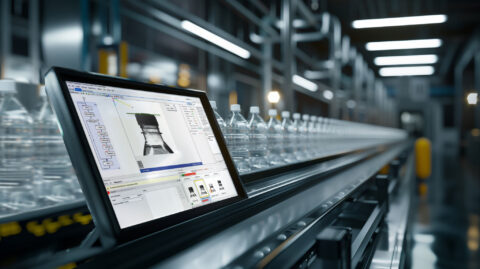Manufacturing PR
A Camera Snapshot Of Africa’s Industrial Future
When the African Continental Free Trade Area (AfCFTA) agreement went into effect on January 1, 2021, Africa became the largest free trade area in the world, connecting 1.3 billion people across 55 countries with a GDP valued at US$3.4 trillion. Its aim is to boost intraregional trade in manufacturing and gives local manufacturers an opportunity to grow their share of global trade.
Sunday, November 20 is the United Nations Africa Industrialization Day, and a chance to reflect on progress. Now that we’re over 15 months on, are manufacturers seeing a boost to their bottom lines?
The pandemic slowed down the implementation of the trade agreement. As we stand, the AfCFTA agreement is currently between the negotiation and implementation phases. There is positive market sentiment that the agreement is a huge step forward for Africa although the benefits to manufacturers might only show up in the next 3-5 years.

By 2035, the volume of total exports could increase by almost 29%. According to a report by the World Bank, intracontinental exports could increase by more than 81% and exports to non-African countries could rise by 19%. We may also see African countries coming together with complimentary local products and forming alliances to offer a broader range or more complete product set to the international market.
I see some manufacturers in isolation who are proactively planning their digitisation roadmap and are starting to invest to be able to cope with current and future demand. I believe manufacturers that are proactively investing now and geared up for future growth will be ahead of the curve and reap the rewards.
Slow and Steady, but Start Now
However, the limited insight into operations could be a stumbling block for manufacturers as the AfCFTA agreement adoption gains momentum. Many local manufacturers have not digitised their manufacturing operations, and this will limit their ability to boost productivity and move faster on projects. The reality is that if manufacturers experience rapid growth and need to hit more aggressive deadlines, they will find it extremely challenging without real-time insight into what is happening on their manufacturing floors and in their supply chains.
For manufacturers to transform and redesign their operations, they will need to take a systematic approach in looking at their manufacturing operations and identifying which are the key areas to focus on to digitise data, digitalise workflows and automate manual processes. It does not have to be a ‘’big bang’’ approach but building a roadmap with a clear end goal and the steps to get there would be a great start.
It could start by simply introducing track and trace solutions using sensors, RFID readers and scanning technology. This would enable manufacturers to create a digital record of every product as it moves through their manufacturing facilities. Track and trace solutions enable them to know what’s going on across the supply chain. With this insight, manufacturers will have better visibility into their operations, become more agile and optimise floor performance.
For example, implementing a fixed industrial scanning (FIS) or machine vision solution can help optimise and digitise quality control checks on the conveyor belt, whether checking labelling or manufactured parts. I recently read about a transport and logistics company who gained 50% in time savings in its inbound storage operations using FIS industrial cameras and software.
During the first five months, the FIS solution autonomously scanned and validated around 700,000 packages. As the complete process for each package only takes three seconds, follow up processes have been automated, and staff only intervene by exception. Read rates have also been significantly accelerated and accuracy has been enhanced. The processing time is halved compared with manual-only scanning, and a truckload of boxes is unloaded in under an hour.
Record not Enough, Businesses Need Reality
Systems of record were once enough, but the reality is that with ever-rising customer expectations, manufacturers will need systems of reality to compete in the on-demand economy. I believe that the ultimate goal is digitalisation, and for some, automation will be feasible. But the journey needs to be mapped out with a clear starting point and end goal.
The first step is to build this roadmap with industry experts and start on the journey. For manufacturers to be competitive and deliver on their customer expectations, they will have to protect customer confidence, be able to track anything anywhere, and account for every product and possibility.
Readers wanting to discuss the best approaches to modernise their operations can reach out to Neil here.





